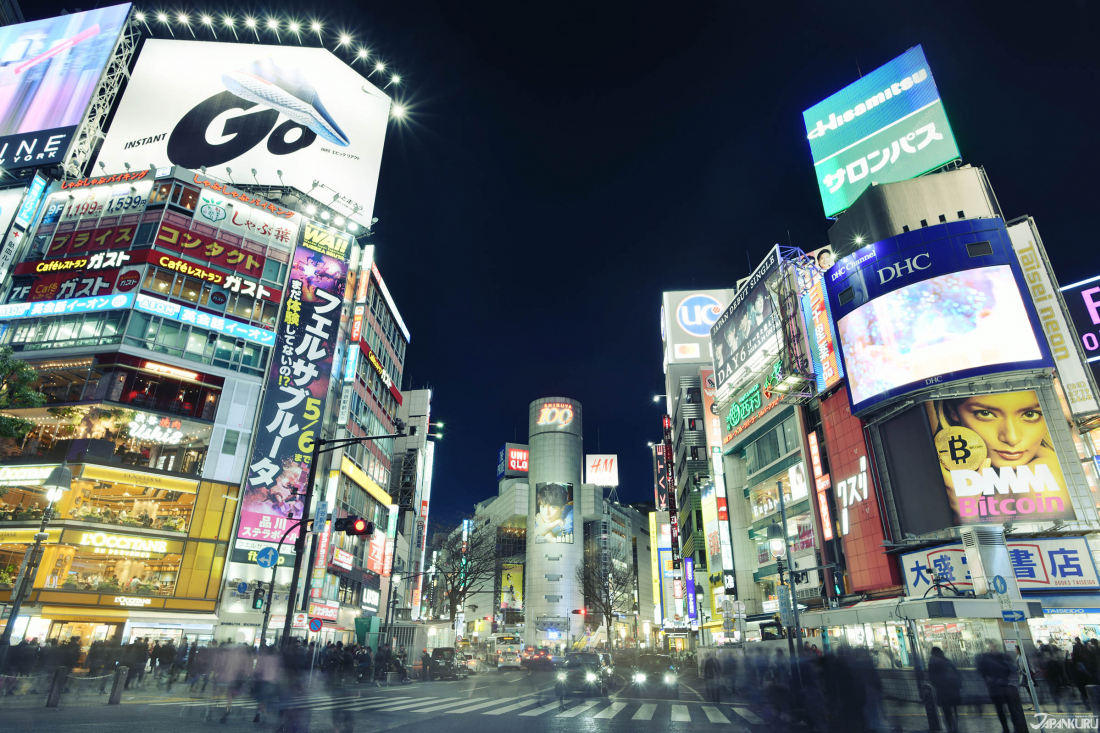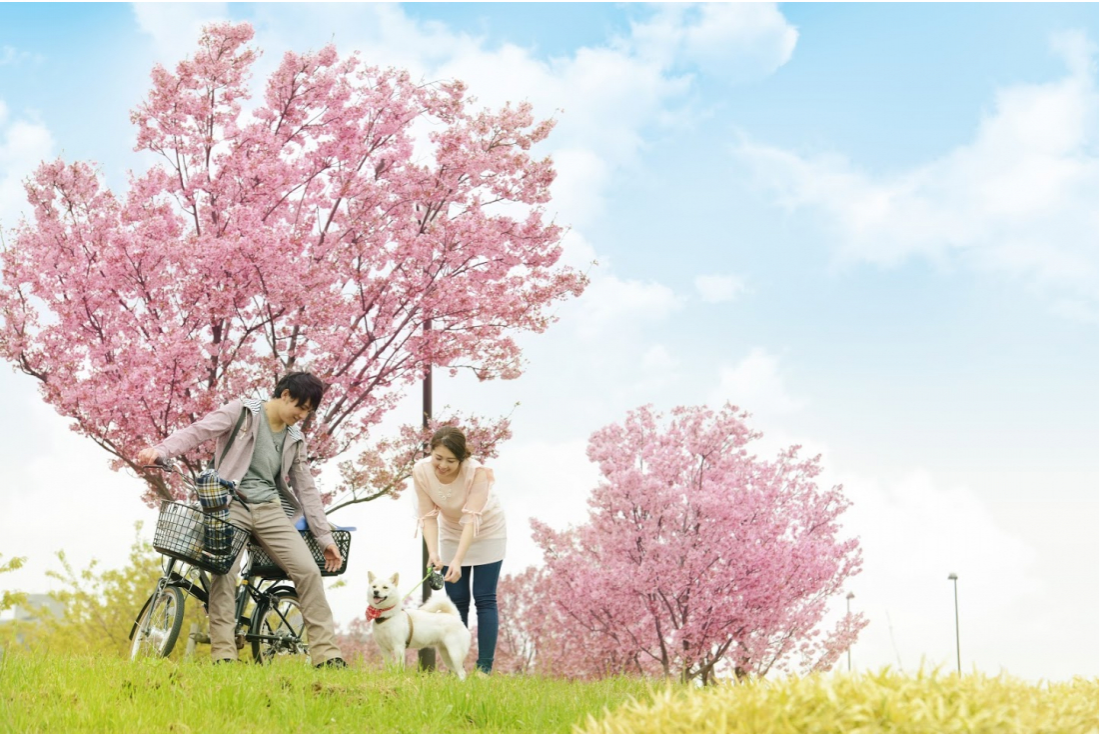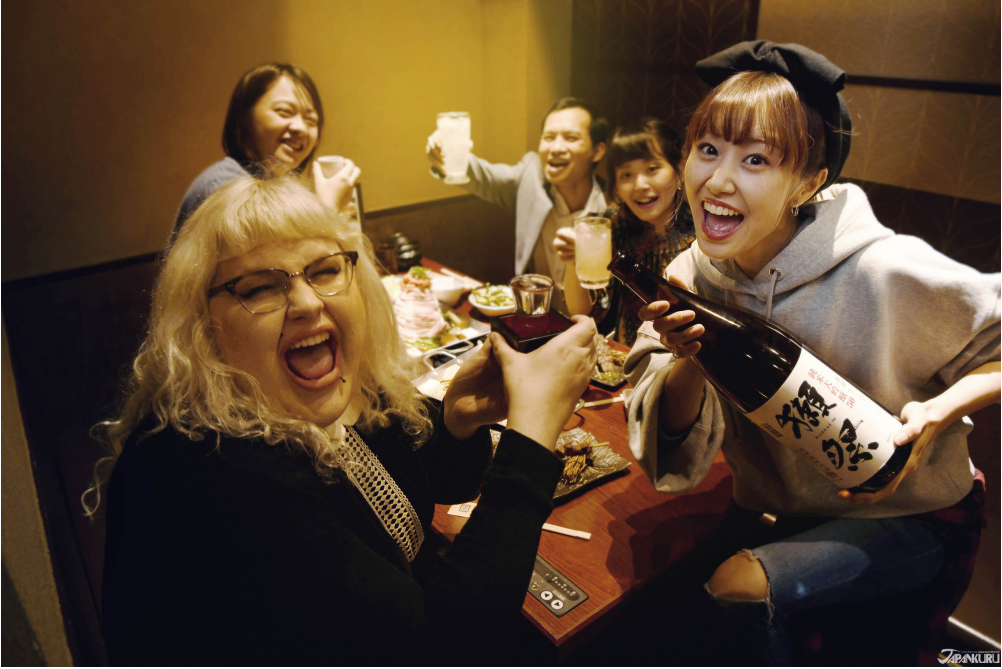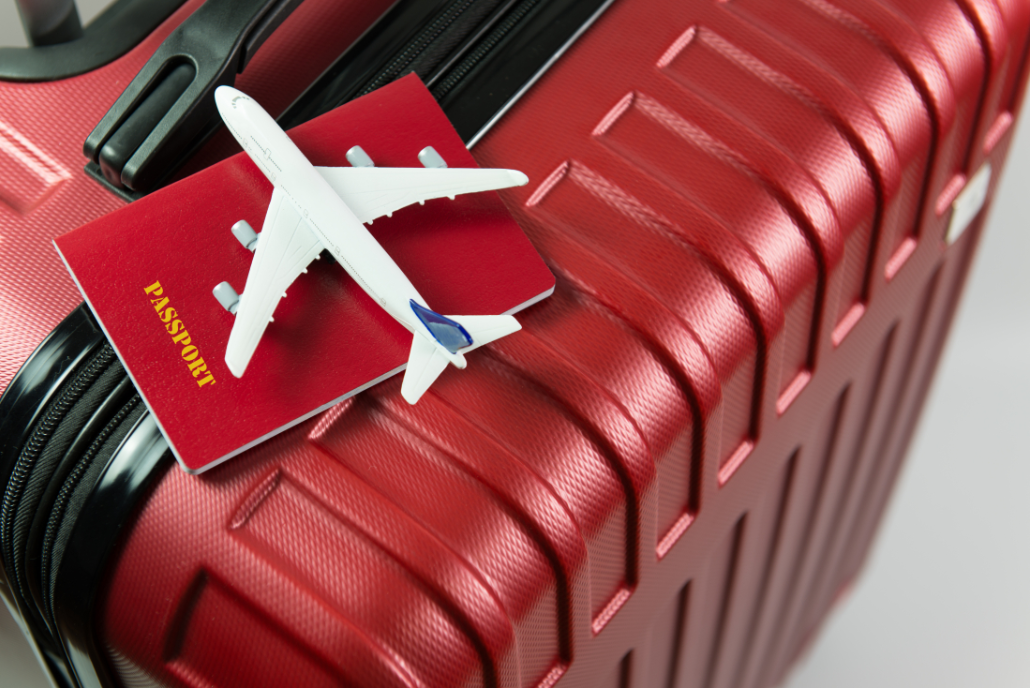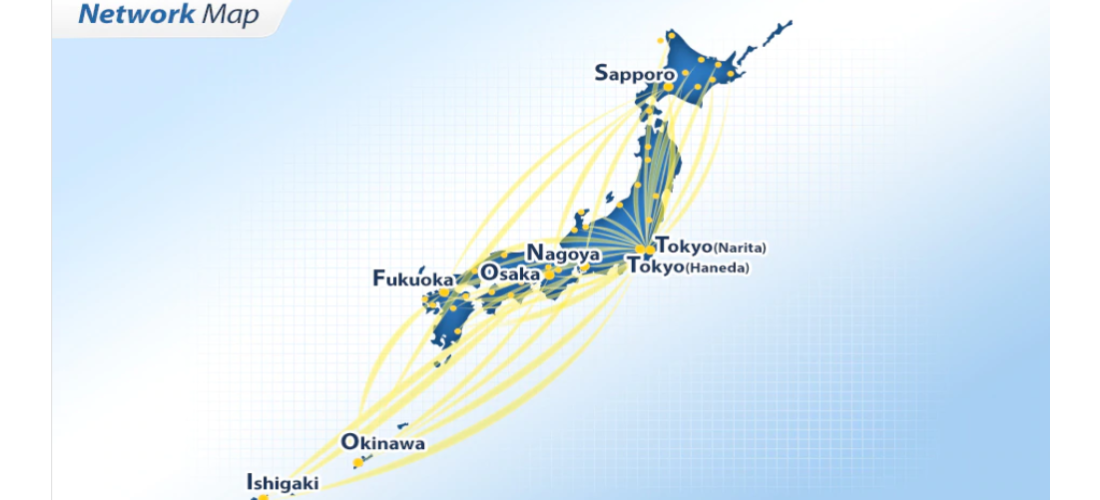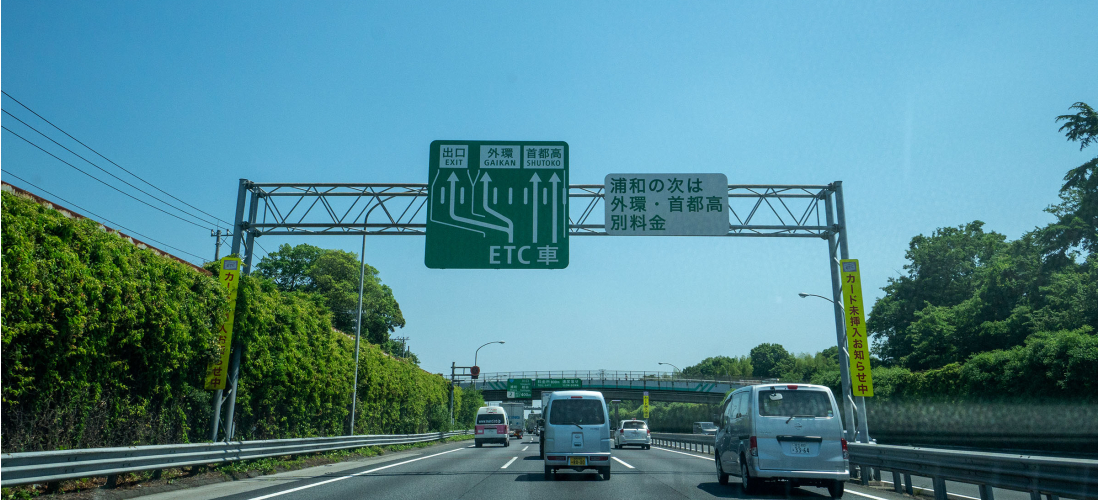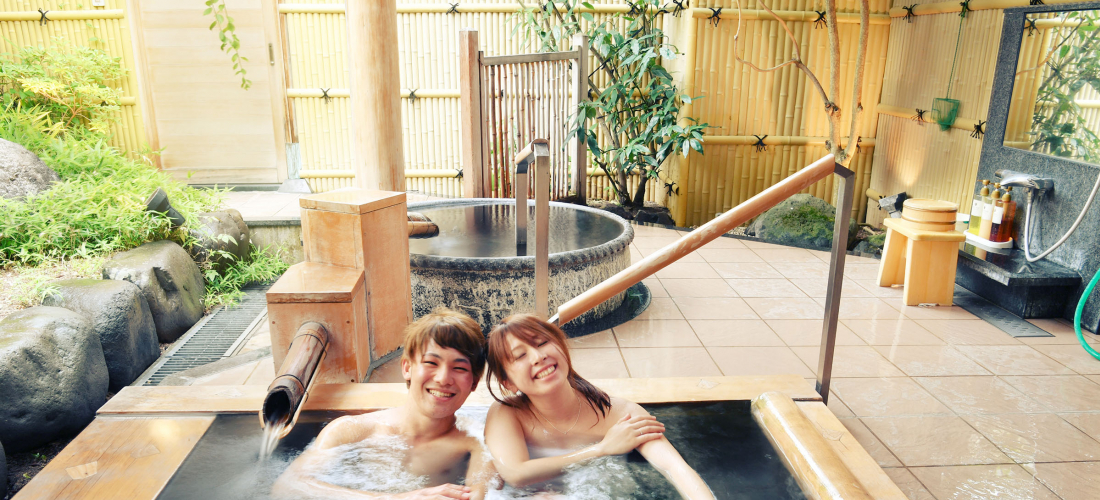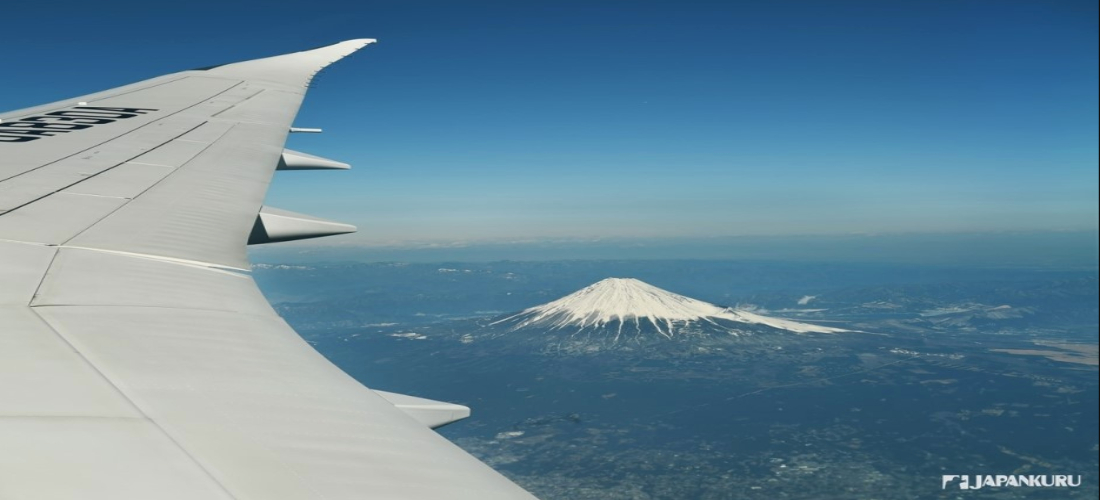
CONTENTS
Everything you need to know before you get to Japan!
*This article has been last updated on Jan 22, 2020, with new and updated links. (Originally published on Feb 3, 2019.)
Now that the 2020 Tokyo Olympics and Paralympics are coming up, we believe there will be more people coming into the country and for some of you it may be your first trip to Japan, so here is a list of what you need to know,
What is the first thing you need to know when you travel to Japan? What sort of things should prepare or expect to see? Japan is one of the top 10 safest countries in the world which also makes it one of the most organized, but it can also be weird and a bit crazy (but that's great too right?!). Aside from preparing for the language barrier (there is a pretty big one), there are a few things we would like to recommend first-time visitors know before coming to Japan to make things just that much easier.
1. Japan’s National Holidays
✴New Year's (お正月): In a lot of Western countries Christmas and New Year's break are combined, but since Japan doesn't recognize Christmas as a holiday (it's more a "couples holiday" like Valentine's Day), there is only a New Year's break. Public holidays are held from December 29 to January 3, but it is common for companies to have the whole first week of January off. Which means the break could last anywhere from five to ten days.
✴Golden Week (ゴールデンウイーク): Golden Week is a collection of four national holidays within a week, which makes it "golden"! The holiday normally starts on April 29th with "Showa Day" (昭和の日) and ends May 5th on "Children's Day (子供の日), but 2019 is special due to the current Emperor stepping down. Due to Japanese law regarding holidays, this year's Golden Week will be 10days (April 27~May6). It is Japan's busiest time to travel, so be ready if you plan on coming during this time!
✴Obon (お盆): Also with a nickname of "Silver Week", Obon is a three-day "holiday" (it's not officially a national holiday) in the middle of August that is done to honor the spirits of one's ancestors. Sort of similar to Mexico's Day of the Dead if you want to compare it to something.
2. Festival and Celebrations
・January: Hatsumode "the first shrine visit of the year" (初詣), Greeting from the Emperor, Lucky Bag shopping (福袋; fuku bukuro), Miyoshi Bondensai (三吉梵天祭), Nozawa Fire Festival (道祖神火祭り), Nagasaki Lantern Festival (長崎提灯祭り) Sumo Tournaments in Tokyo
・February: Sapporo Snow Festival (さっぽろ雪まつり), Asahikawa Winter Festival (旭川冬まつり), Setsubun (節分), Plum Blossom (梅)
・March: Hina Festival "Girl's Day" (ひな祭り), Daruma Festival (だるま祭り), Plum Blossom (梅), Omizutori (お水取り), Sumo Tournaments in Osaka
・April: Kanamara Festival "Penis Festival" (かなまら祭り), Cherry blossom Festival (花見; hanami), Takayama Festival (高山祭), Onbashira Festival (式年造営御柱大祭), Beppu Hot Spring Festival (別府八湯温泉まつり)
・May: Hakata Dontaku (博多どんたく), Aoi Matsuri (葵祭り), Kawachi Fujien Wisteria (河内藤園)
・June: Hydrangea Festival (あじさい祭り), Firefly Festival (蛍祭り), Sanno Festival (山王祭り)
・July: Tokyo Olympics opens on the 24th, Fireworks Season (花火大会), Tanabata "Star Festival" (七夕まつり), Obon (お盆), Gion Festival (祇園祭), Mitama Festival (みたままつり), Tenjin Festival (天神祭), Sumo Tournaments in Nagoya
・August: Iwamori Nebuta Festival (ねぶた祭), Sendai Tanabata Festival (七夕まつり), Kyoto Gozan no Okuribi (五山送り火), Tokyo Koenji Awa Odori (高円寺阿波おどり), Tokyo Harajuku Omotesando Super Yosakoi (原宿表参道元氣祭 スーパーよさこいl), Hachioji Festival (八王子祭り)
・September: 2020 Paralympics opens on the 25th, Meguro Kumin Matsuri (目黒のSUNまつり)
・October: Nagasaki Kunchi (長崎くんち), Tokyo Honmonji (御会式), Autumn Leaves (秋季祭)
・November: Season for Fall Leaves (紅葉), Jingu Gaien Ginkgo Festival (明治神宮外苑いちょう祭り), Shichi-go-san (七五三), Sumo Tournaments in Fukuoka, Momiji Festival ()
・December: Illuminations, Kasuga Wakamiya Festival (春日若宮おん祭), Namahage (なまはげ)
Also, check out our event's page for monthly events going on in Japan.
3. Must-See Places in Japan
but here is a small list of some major sightseeing spots in Japan
・Tokyo: Japanese Imperial Palace, Meiji Shrine, Tokyo Tower, Tokyo Skytree, Toyosu Market, Kabukiza Theatre
・Hokkaido: Sapporo Beer Museum, Nikka Whisky Yoichi Distillery, Otaru Canal
・Tohoku Region: Hiraizumi, Zao Fox Village, Ginzan Onsen
・Kanto Region: Kawagoe, Hakone, Kamakura, Cup Ramen Museum, Kusatsu Onsen
・Chubu Region: Mt. Fuji, Suntory Hakushu Whisky Distillery, Nagoya Castle, Matsumoto Castle
・Kansai Region: Kyoto, Osaka Castle, Dotonbori, Universal Studios Japan
・Shikoku/Chugoku Region: Dogo Onsen, Matsuyama Castle, Mount TsurugiPilgrimage destinations, 88 temple pilgrimage routes, Itsukushima Shrine
・Kyushu: Dazaifu Tenmangu Shrine, Sakurajima, Kumamoto Castle, Gunkanjima (Hashima Island)
・Okinawa: Okinawa Churaumi Aquarium, Toyosaki Beach in Emerald Sea, Murasaki Mura Ryukyu Kingdom, Orion Happy Park
4. Roaming service? Prepaid SIM Card? Pocket Wifi? Using your phone in Japan
There are two options for getting phone service while in Japan, SIM Cards and Pocket Wi-Fi. A lot of which you choose depends on the person and their travel plans but it is worth looking into.
Pre-Paid SIM Card
Probably our biggest recommendation out of the two. You can get them at the airport and choose how much data you would like. You are very likely to be covered for the whole trip. Most SIM Cards are provided by DoCoMo which is one of Japan’s biggest mobile operators so you are guaranteed great service.
Advantages: +Can be used for applications like Skype, Facebook, FaceTime, and Google Maps
+Easy to set up and you know right away if it is working or not
Disadvantages: – Can use up a lot of battery
–Your phone must be SIM-free or unlocked
Pocket Wi-Fi
Pocket Wi-Fi is better for groups since everyone can use the same limit, however with that uses their daily limit pretty quickly if you aren't careful.
Advantages: +Coverage even in both urban and rural areas
+Easy to use
+Connect multiple devices
Disadvantages: –It's something extra to carry around
–Requires frequent charging
–Equipment rental and return procedures
–Chance of having issues during travel
5. Traveling by Train/Bus
The complication on Japanese railways depends on the area, but that doesn't make using them any less uneasy. Especially in Tokyo where there are around different 55 lines, things can get confusing. Rather than looking at a rail map of Tokyo, it would be better to use an app to help navigate. But what is a popular Japanese train route app? One of the most popular apps that you will hear tons of people talking about is HyperDia. Available in English, Japanese and Chinese, Hyperdia lets you choose your departure and arrival stations as well as the time of travel. Or you can always use Google.
Another often asked question is rail passes. Japan's train cost can be pretty expensive. The price will increase the further you go and each railway company also has their own prices. Which brings people to ask one of the biggest questions is "is the JR Pass worth it? If not what are other rail pass options?".
Japan Public Transportation Pass/Ticket Options
・Japan Rail Pass: If you are staying in Tokyo, the JR Pass probably wouldn't be worth it money wise. You will need to make multiple trips to give you the bang for your buck. If you have the 7 day pass, taking a round trip from Tokyo to Kyoto will be worth it but for the 14 day and so on you would need to make more trips to say Osaka and Hiroshima. There are a few JR Pass calculators online to help give you an idea if the pass pays off which can be helpful. The pass gives you access to all JR trains nationwide including Shinkansen (except Nozomi & Mizuho trains), local JR buses (keep in mind not all buses are JR, including the Raku bus in Kyoto), and the JR Ferry to Miyajima.
・Tokyo Metro Ticket: Although cheap and available in 24, 48, 72hr tickets, it is only available for Tokyo Metro and Toei Subway lines. So before purchasing, we would recommend you look up the stations you plan on using during your stay to decide if it is worth it. Since there are some stations that do not use the metro.
・Suica or PASMO: Great for those traveling just within Tokyo. It saves you money and hassle in comparison to buying individual train tickets each time.
Train Passes in Other Cities
Many of Japan’s cities have a variety of day passes allowing giving unlimited rides and even discounts to various attractions. This is a lifesaver for budget travel in Japan! Some examples are:
・Hiroshima: 1 Day Streetcar Pass – 600yen (300yen for children) or 1 Day Streetcar and Ferry – 840yen (420)
・Osaka: Osaka Amazing Pass – 1 day pass 2500yen or 2 day pass 3300yen
・Kyoto: Kyoto Bus One-Day Pass 600yen (300yen)
・Nagasaki: One-Day Bus Pass – 500yen (250yen) or One-Day Streetcar Pass 500yen (250yen)
6. Things to Remember about Taxis
Transportation methods such as trains and buses are inexpensive, but if you have to travel far from the station, or if you have a lot of luggage, sometimes a taxi is just better. The basic fare for a taxi is about 730yen for the first 2km (1.2 miles) (from January 2017, the fare for the first kilometer has been adjusted to 410yen). Other than the prices, there are a few things to keep in mind when flagging down a taxi in Japan: How to use a taxi is not different from Korea. If you see an empty car, lift your hand and call a taxi. But, like a habit, you should not open a taxi door right away. The following are precautions when using the taxi.
・Calling a cab: How do you know when a cab is vacant? About 99% of the cabs have their vacancy written in only Japanese so it can be difficult. So to help you out, Vacant = 空車. If you see 迎車 or 貸切, it means the taxis are reserved and picking someone up.
・Automatic doors: When the taxi stops, the door in the rear seat opens and closes automatically and the same when you arrive at your destination. The taxi driver presses a button to open the doors, so wait for it to open then get off.
・Language barrier: Most taxis drivers can speak a bit of English, but to make things go smoothly it may be better if you have a memo of the name and address or guide book on hand.
・Luggage loading on the trunk: Putting luggage in the trunk is of course an option. Just motion to the driver and he will open the trunk and help you load everything.
7. Guide to Tabe-hodai (食べ放題)/Nomi-hodai (飲み放題) Restaurants
In Japan, there is an "all you can eat/drink", or "houdai" culture that allows you to eat and drink your hearts out for a set time (normally 90minutes)! Similar to a buffet, except you are at your seat the whole time.
・"Tabehoudai" (食べ放題): A service that allows you to continue to eat as much as you want from the restaurants "tabehoudai menu". Sometimes the menus can be specific, like yakiniku (grilled beef) or yakitori (chicken skewers) tabehoudai, others you get a wide variety of food allowing you to try lots of different things.
・"Nomihoudai" (飲み放題): A service that allows you to order both alcoholic and non-alcoholic beverages for a fixed amount of time. The type of beverages offered varies from restaurant to restaurant. Some places have a good selection, others don't, so we advise you to check beforehand if possible. It's also worth mentioning that a lot of restaurants will only let you order one drink/person at a time.
8. Izakayas
・Ordering: Izakayas and restaurants in Japan don't have a set waiter per table so there are three ways of ordering. 1. Hold your hand up to show your ready (normally it is seen as rude in other countries but it is very common in Japan). You can even use your Japanese skills and say "Excuse me" or, "Sumimasen" like everyone does. 2. Some places have buttons you can push to notify the waiters you are ready 3. Some places have tablets at the table that you use to order so there you will have little conversation with the waiter. Most tablets are offered in Japanese, English, and Chinese.
・"Otoshi" Table Charge: Many if not most izakaya's have a food culture known as "otoshi" (お通し) which is basically a table charge but they do it by serving a small random dish that you never ordered at the beginning of the meal. The charge can be anywhere between 500 to 700 yen (roughly between $4~7), and most izakayas don't tell you they have a table charge.
・Paying the bill: Be prepared that many izakayas and restaurants don't split the bill nor accept credit cards. It is There may be an Izakaya that does not accept payment of the card at times.
9. Checklist before Getting the Airport
Knowing what is a must to bring to Japan can be up in the air for some people, but really there isn't much that you MUST have besides the obvious passport and plane ticket. But for those that are curious, we made a small list of things we felt were good to have packed when you come to Japan!
Required
☑ Passport
☑ Visa (for those necessary, find out if you need one here)
☑ Plane ticket (electronic ticket)
☑ Japanese Yen
☑ Accommodation name and address (to write on immigration sheet)
☑ Electrical adapter (Japan runs on a 100V current, plug Type A/B however 99% outlets are only 2prong)
☑ Weather appropriate clothing (weather and clothing advice from JTB travel agency)
☑ Medical note if you bring in more than a months worth of prescription drugs (more below)
Optional
・Copy of passport
・Printed confirmation email(s) of any prepaid passes/tickets
・Offline travel/translation apps downloaded
・Portable phone charger
・Hand sanitizer (a lot of public bathrooms don't offer soap)
・Handtowel (some public bathrooms, esp in stations don't have paper towers or hand dryers)
10. Cash or Card?
Using a Credit Card in Japan
Japan is a very much cash-based country. Lately, more and more places accept credit cards like department stores and a few restaurants, but it is really hit and miss. Even a few tourist spots like castle or museum entree fees can only be paid by cash. So we strongly recommend you plan on using cash for the majority of your trip.
Withdrawing Money from Home Bank Account
If you run out of money and would like to withdraw money from your account you have two ATM options.
① ATM at the convenience store 7/11 (other convenience store ATMs won't work)
② Japan Post Office Bank ATM (Japan Post Bank ATM Finder and more info here)
Exchanging Money within Japan
For those that have no Japanese yen but plenty of their own currency and would like to exchange in the city here are 3 recommendations:
① DAIKOKUYA (大黒屋) – most famous and normally the best rates
② Travelex
③ Some Japanese banks (Tokyo-Mitsubishi UFJ, SMBC Trust Bank, Mizuho Bank)
11. Bringing Medication to Japan
Over-The-Counter Medicine
Most over the counter drugs are allowed to be carried to Japan, but Japanese law limits up to a two months' supply. According to the Japanese Ministry of Health, Labour and Welfare, products that contain stimulants and these ingredients are not allowed by law. If you wish to bring in more than a two-months' supply of medicine, you need to fill out and apply for "Yakkan Shoumei" before leaving for Japan.
Prescription Medication
When it comes to prescription drugs, it gets tricky so if you are unsure about anything your best bet is to contact a local Japanese Consulate. The general rule for prescription drugs is that you are limited to a months' supply only. Similar to the over-the-counter drugs, if you exceed that amount then you need to apply for "Yakkan Shoumei" in advanced. Travelers should bring a copy of their doctor's prescription, a letter stating the purpose of the drug, and the Yakkan Shoumei certificate, and show the forms with your prescription medicines at customs. If you are bringing a household medical device (like a CPAP) you do not need to file for Yakkan Shoumei but you are only permitted to bring one (one device) and will be required to have it checked at customs.
Some medications aren't allowed in Japan like Adderall, which is why it is best to check if your medication is alright to bring into Japan. For more information about bringing medicines for into Japan, please visit the website of the Ministry of Health, Labour and Welfare page.
12. Getting to Your Hotel from the Airport
Since most people fly into Tokyo, we will use Haneda Airport and Narita Airport as examples.
From Narita Airport
① JR Narita Express (EX): roughly 3000yen, has access to a number of JR stations
② Keisei Skyliner: roughly 2465yen, only takes you to Nippori and Ueno Stations
③ Keisei Limited Express: 1190yen, take Keisei Limited Express from Nippori Station. One of the cheapest options but also takes the longest.
④ Bus: there are many different buses available that will take you all over Tokyo and surrounding areas. No need to reserve in advance! The buses run regularly. Price range is anywhere between 900~3200yen.
We would never recommend taking a taxi unless you are looking to pay hundreds of dollars (at least 20,000yen).
From Haneda Airport
① Tokyo Monorail: 483yen, get on from Hamamatsucho Station
② Keikyu Line: 407yen, get on from Shinagawa Station
③ Bus: Just like at Narita Airport, there are a number of buses available to take you close to where you are going like Keikyu Bus that goes to most major cities in and around Tokyo. Unlike with Narita Airport, transportation options are limited from Haneda Airport so we recommend taking a bus so you won't have to deal with changing trains and traffic.
Be sure to look at JAPANKURU🐶 for more exciting articles every day!!
Or add us on Instagram, Facebook and Twitter to share your Japanese pictures💖🗾
- TOUR
- TOKYO
- airport
- atm
- basic info
- beginners guide
- cash
- checklist
- cherry blossoms
- chubu
- credit card
- festival
- fuji
- golden week
- guide
- hanami
- haneda
- hokkaido
- holiday
- hotel
- illumination
- izakaya
- japan 101
- jr
- jrpass
- kansai
- kanto
- kyushu
- matsuri
- metro
- mount fuji
- mt. fuji
- narita
- new year
- nomihoudai
- obon
- okinawa
- otoshi
- payment
- rail pass
- seasonal
- shikoku/chugoku
- subway
- tabehoudai
- tohoku
COMMENT
FEATURED MEDIA
VIEW MORE 
A New Tokyo Animal Destination: Relax & Learn About the World’s Animals in Japan
#pr #japankuru #anitouch #anitouchtokyodome #capybara #capybaracafe #animalcafe #tokyotrip #japantrip #카피바라 #애니터치 #아이와가볼만한곳 #도쿄여행 #가족여행 #東京旅遊 #東京親子景點 #日本動物互動體驗 #水豚泡澡 #東京巨蛋城 #เที่ยวญี่ปุ่น2025 #ที่เที่ยวครอบครัว #สวนสัตว์ในร่ม #TokyoDomeCity #anitouchtokyodome

Shohei Ohtani Collab Developed Products & Other Japanese Drugstore Recommendations From Kowa
#pr #japankuru
#kowa #syncronkowa #japanshopping #preworkout #postworkout #tokyoshopping #japantrip #일본쇼핑 #일본이온음료 #오타니 #오타니쇼헤이 #코와 #興和 #日本必買 #日本旅遊 #運動補充能量 #運動飲品 #ช้อปปิ้งญี่ปุ่น #เครื่องดื่มออกกำลังกาย #นักกีฬา #ผลิตภัณฑ์ญี่ปุ่น #อาหารเสริมญี่ปุ่น

도쿄 근교 당일치기 여행 추천! 작은 에도라 불리는 ‘가와고에’
세이부 ‘가와고에 패스(디지털)’ 하나면 편리하게 이동 + 가성비까지 완벽하게! 필름카메라 감성 가득한 레트로 거리 길거리 먹방부터 귀여움 끝판왕 핫플&포토 스폿까지 총집합!
Looking for day trips from Tokyo? Try Kawagoe, AKA Little Edo!
Use the SEIBU KAWAGOE PASS (Digital) for easy, affordable transportation!
Check out the historic streets of Kawagoe for some great street food and plenty of picturesque retro photo ops.
#pr #japankuru #도쿄근교여행 #가와고에 #가와고에패스 #세이부패스 #기모노체험 #가와고에여행 #도쿄여행코스 #도쿄근교당일치기 #세이부가와고에패스
#tokyotrip #kawagoe #tokyodaytrip #seibukawagoepass #kimono #japantrip

Hirakata Park, Osaka: Enjoy the Classic Japanese Theme Park Experience!
#pr #japankuru #hirakatapark #amusementpark #japantrip #osakatrip #familytrip #rollercoaster #retrôvibes #枚方公園 #大阪旅遊 #關西私房景點 #日本親子旅行 #日本遊樂園 #木造雲霄飛車 #히라카타파크 #สวนสนุกฮิราคาตะพาร์ค

🍵Love Matcha? Upgrade Your Matcha Experience With Tsujiri!
・160년 전통 일본 말차 브랜드 츠지리에서 말차 덕후들이 픽한 인기템만 골라봤어요
・抹茶控的天堂!甜點、餅乾、飲品一次滿足,連伴手禮都幫你列好清單了
・ส่องมัทฉะสุดฮิต พร้อมพาเที่ยวร้านดังในอุจิ เกียวโต
#pr #japankuru #matcha #matchalover #uji #kyoto #japantrip #ujimatcha #matchalatte #matchasweets #tsujiri #말차 #말차덕후 #츠지리 #교토여행 #말차라떼 #辻利抹茶 #抹茶控 #日本抹茶 #宇治 #宇治抹茶 #日本伴手禮 #抹茶拿鐵 #抹茶甜點 #มัทฉะ #ของฝากญี่ปุ่น #ชาเขียวญี่ปุ่น #ซึจิริ #เกียวโต

・What Is Nenaito? And How Does This Sleep Care Supplement Work?
・你的睡眠保健品——認識「睡眠茶氨酸錠」
・수면 케어 서플리먼트 ‘네나이토’란?
・ผลิตภัณฑ์เสริมอาหารดูแลการนอน “Nenaito(ネナイト)” คืออะไร?
#pr #japankuru #sleepcare #japanshopping #nenaito #sleepsupplement #asahi #睡眠茶氨酸錠 #睡眠保健 #朝日 #l茶胺酸 #日本藥妝 #日本必買 #일본쇼핑 #수면 #건강하자 #네나이토 #일본영양제 #อาหารเสริมญี่ปุ่น #ช้อปปิ้งญี่ปุ่น #ร้านขายยาญี่ปุ่น #ดูแลตัวเองก่อนนอน #อาซาฮิ

Japanese Drugstore Must-Buys! Essential Items from Hisamitsu® Pharmaceutical
#PR #japankuru #hisamitsu #salonpas #feitas #hisamitsupharmaceutical #japanshopping #tokyoshopping #traveltips #japanhaul #japantrip #japantravel

Whether you grew up with Dragon Ball or you just fell in love with Dragon Ball DAIMA, you'll like the newest JINS collab. Shop this limited-edition Dragon Ball accessory collection to find some of the best Dragon Ball merchandise in Japan!
>> Find out more at Japankuru.com! (link in bio)
#japankuru #dragonball #dragonballdaima #animecollab #japanshopping #jins #japaneseglasses #japantravel #animemerch #pr

This month, Japankuru teamed up with @official_korekoko to invite three influencers (originally from Thailand, China, and Taiwan) on a trip to Yokohama. Check out the article (in Chinese) on Japankuru.com for all of their travel tips and photography hints - and look forward to more cool collaborations coming soon!
【橫濱夜散策 x 教你怎麼拍出網美照 📸✨】
每次來日本玩,是不是都會先找旅日網紅的推薦清單?
這次,我們邀請擁有日本豐富旅遊經驗的🇹🇭泰國、🇨🇳中國、🇹🇼台灣網紅,帶你走進夜晚的橫濱!從玩樂路線到拍照技巧,教你怎麼拍出最美的夜景照。那些熟悉的景點,換個視角說不定會有新發現~快跟他們一起出發吧!
#japankuru #橫濱紅磚倉庫 #汽車道 #中華街 #yokohama #japankuru #橫濱紅磚倉庫 #汽車道 #中華街 #yokohama #yokohamaredbrickwarehouse #yokohamachinatown

If you’re a fan of Vivienne Westwood's Japanese designs, and you’re looking forward to shopping in Harajuku this summer, we’ve got important news for you. Vivienne Westwood RED LABEL Laforet Harajuku is now closed for renovations - but the grand reopening is scheduled for July!
>> Find out more at Japankuru.com! (link in bio)
#japankuru #viviennewestwood #harajuku #omotesando #viviennewestwoodredlabel #viviennewestwoodjapan #비비안웨스트우드 #오모테산도 #하라주쿠 #日本購物 #薇薇安魏斯伍德 #日本時尚 #原宿 #表參道 #japantrip #japanshopping #pr

Ready to see TeamLab in Kyoto!? At TeamLab Biovortex Kyoto, the collective is taking their acclaimed immersive art and bringing it to Japan's ancient capital. We can't wait to see it for ourselves this autumn!
>> Find out more at Japankuru.com! (link in bio)
#japankuru #teamlab #teamlabbiovortex #kyoto #kyototrip #japantravel #artnews
Photos courtesy of teamLab, Exhibition view of teamLab Biovortex Kyoto, 2025, Kyoto ® teamLab, courtesy Pace Gallery

Japanese Makeup Shopping • A Trip to Kamakura & Enoshima With Canmake’s Cool-Toned Summer Makeup
#pr #canmake #enoshima #enoden #에노시마 #캔메이크 #japanesemakeup #japanesecosmetics

⚔️The Robot Restaurant is gone, but the Samurai Restaurant is here to take its place. Check it out, and don't forget your coupon!
🍣신주쿠의 명소 로봇 레스토랑이 사무라이 레스토랑으로 부활! 절찬 쿠폰 발급중
💃18歲以上才能入場的歌舞秀,和你想的不一樣!拿好優惠券去看看~
#tokyo #shinjuku #samurairestaurant #robotrestaurant #tokyotrip #도쿄여행 #신주쿠 #사무라이레스토랑 #이색체험 #할인이벤트 #歌舞伎町 #東京景點 #武士餐廳 #日本表演 #日本文化體驗 #japankuru #japantrip #japantravel #japanlovers #japan_of_insta

Japanese appliance & electronics shopping with our KOJIMA x BicCamera coupon!
用JAPANKURU的KOJIMA x BicCamera優惠券買這些正好❤️
코지마 x 빅 카메라 쿠폰으로 일본 가전 제품 쇼핑하기
#pr #japankuru #japanshopping #kojima #biccamera #japaneseskincare #yaman #dji #osmopocket3 #skincaredevice #日本購物 #美容儀 #相機 #雅萌 #日本家電 #일본여행 #면세 #여행꿀팁 #일본쇼핑리스트 #쿠폰 #일본쇼핑 #일본브랜드 #할인 #코지마 #빅카메라 #japankurucoupon

